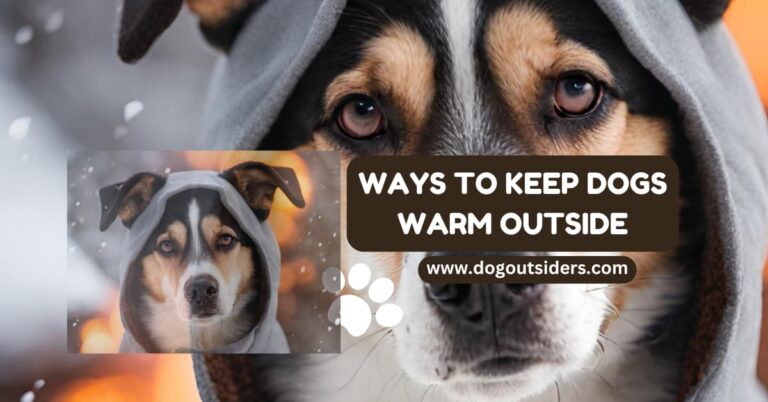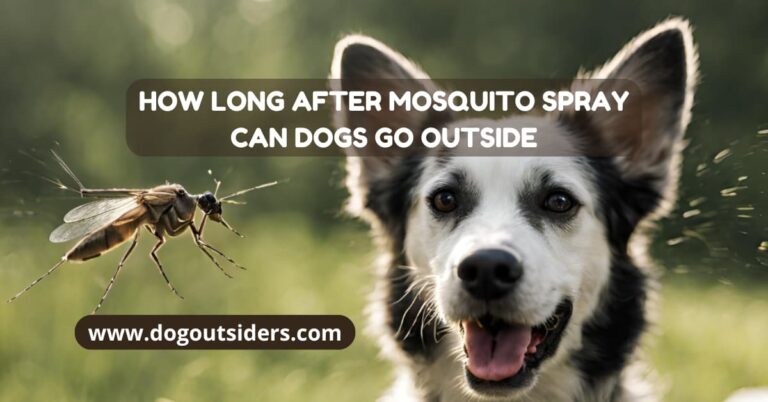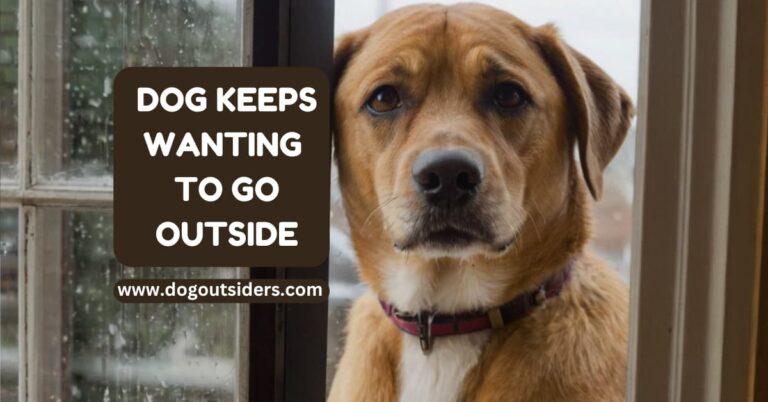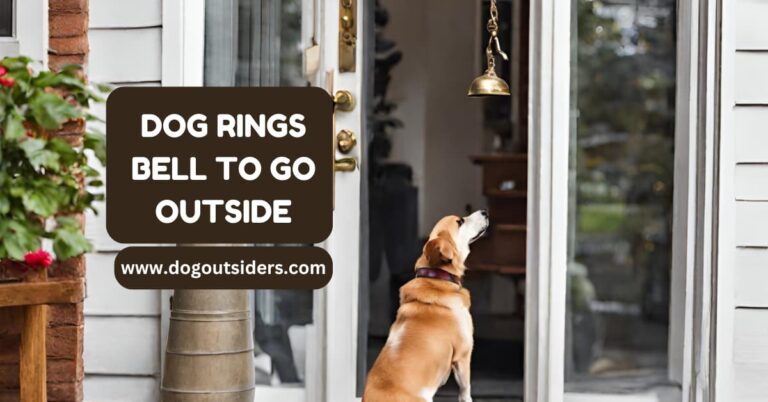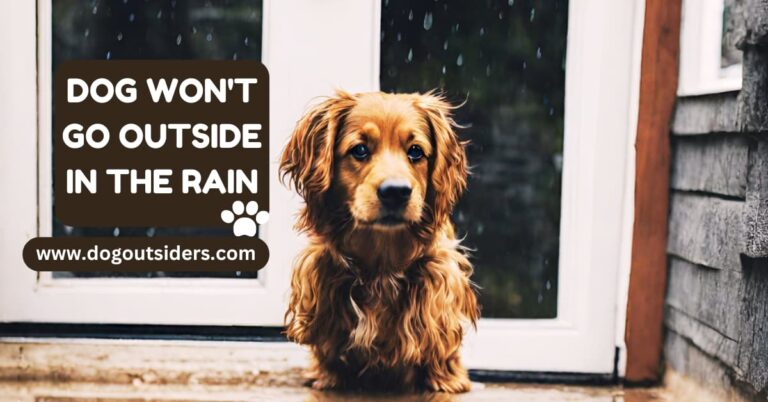Did you know that flies can carry over 100 pathogens harmful to dogs? Yes, you read that right! Flies buzzing around your furry friend can pose serious health risks. But fret not, as I have some pawsome tricks up my sleeve to help you keep those pesky pests at bay. From natural remedies to practical tips, I’ve got you covered. Your pup deserves a fly-free outdoor experience with proper pest control, and I’m here to show you how to achieve just that. So, let’s start to explore how to keep flies off dogs outside and ensure your canine companion stays happy and healthy!
Key Takeaways
- Regular grooming and bathing your dog can help deter flies by keeping them clean and reducing odors that attract insects.
- Maintaining a clean yard is essential in preventing fly infestations around your dog. Clear away pet waste promptly and keep trash bins securely closed.
- Choose dog-safe repellents for pest control to protect your furry friend from harmful chemicals. Look for natural pest control options like citronella or essential oils that are safe for dogs.
- Set up effective fly traps in outdoor areas where your dog spends time to capture flies and reduce their presence.
- Monitor your dog for signs of fly bites, such as excessive scratching or skin irritation, and seek veterinary assistance if needed to treat any resulting infections promptly.
- Understanding the attraction of flies to dogs and taking proactive steps to prevent fly bites can help keep your canine companion healthy and comfortable.
Flies and Dogs: Understanding the Attraction
Factors Influencing Fly Attraction
Flies are attracted to dogs for various reasons, including illness. When a dog is sick, it emits odors that flies find appealing. soiled coats can also attract flies due to the presence of dirt and debris.
I have found that flies are drawn to dogs that emit heat emissions, especially during warmer weather. These emissions act as signals for flies to locate their hosts easily. Moreover, open wounds or skin infections on dogs can release scents that attract flies.
Different Insects and Their Preferences
Various insects are drawn to dogs based on different factors. For instance, fleas are commonly attracted to dogs with poor grooming habits or untreated skin conditions. These pests thrive in warm and humid environments, making them more likely to infest unkempt animals.
In my experience, ticks are another common insect that targets dogs. They are often found in wooded areas or tall grasses where they wait for a host to pass by. Dogs with long fur or those who spend time outdoors are more susceptible to tick infestations.
Coexisting with Insects
Not all insects that are attracted to dogs pose a threat through biting. Some bugs may be harmless and even beneficial in controlling other pest populations. It’s essential to understand the role of these insects in the ecosystem and learn how to coexist peacefully with them.
I have learned that maintaining good hygiene practices for your dog can help reduce the attraction of flies and other insects. Regular grooming, cleaning of living areas, and prompt treatment of any skin issues can deter pests from infesting your pet.
The Harm Flies Cause to Dogs
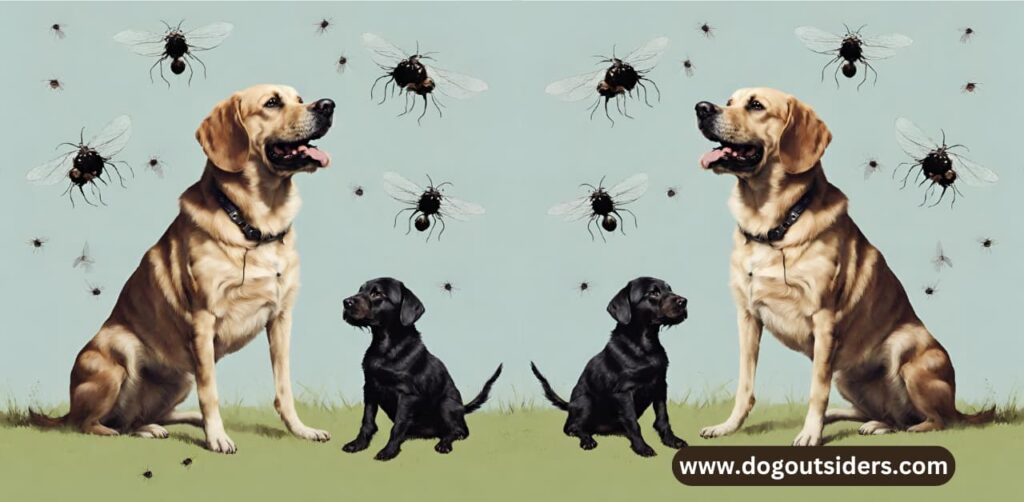
Infections
Fly bites on dogs can lead to infections, especially when left untreated. These infections can range from mild skin irritations to more severe conditions.
Dogs with open wounds are particularly vulnerable to infection from fly bites. The bacteria carried by flies can easily enter the dog’s body through these wounds.
Skin Irritation
Fly bites cause irritation, particularly in thinly haired areas such as the ears and nose. This irritation often leads to constant scratching, which can further damage the skin and create opportunities for infections.
I have found that keeping my dog’s outdoor living space clean and free of waste helps reduce the presence of flies, minimizing the chances of irritating bites.
Pain and Discomfort
The pain associated with fly bites can be distressing for dogs, affecting their overall well-being. Constant itching and discomfort may result in behavioral changes, affecting their quality of life. To alleviate my dog’s discomfort, I use natural repellents like citronella or eucalyptus oil, which help deter flies without harming my pet.
Insects Drawn to Dogs
Types of Insects Attracted to Dogs
Insects such as biting midges, black flies, and mosquitoes are commonly attracted to dogs. These pests are drawn to the warmth and moisture of a dog’s body, making them prime targets for bites. Certain regions may have a higher prevalence of specific insects, leading to varying levels of infestation.
I’ve found that mosquitoes tend to be more common in areas with standing water, while biting midges thrive in damp environments. Understanding the types of insects prevalent in your area can help you take proactive measures to protect your furry friend from potential bites.
Risks Associated with Insect Bites on Dogs
Insect bites can pose significant risks to a dog’s health. Bites from these pests can lead to allergic reactions, skin irritations, and even infections if left untreated. Mosquito bites, in particular, can transmit diseases such as heartworms, which can be fatal if not addressed promptly.
Personally, I make sure to regularly check my dog for any signs of insect bites, especially after outdoor playtime. Keeping an eye out for redness, swelling, or excessive scratching can help catch any issues early on. Using pest control products specifically designed for dogs can provide an extra layer of protection against these pesky insects.
Steps to Prevent Fly Bites
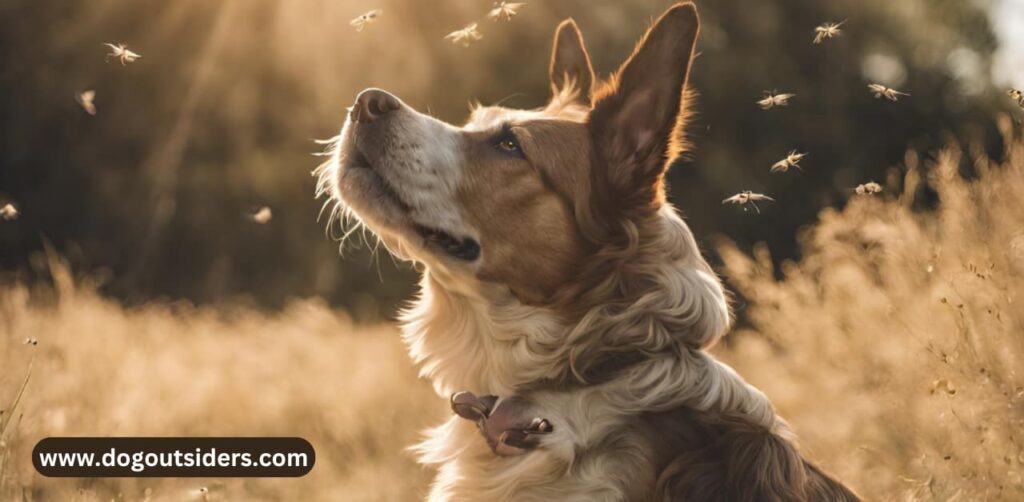
Sunny Areas
When walking dogs outside, opt for sunny spots as flies are less likely to be present in these areas. Flies are typically attracted to damp and shady places.
I find that taking my dog out for walks during the sunniest parts of the day significantly reduces the chances of fly bites. The warmth and brightness seem to keep those pesky insects away.
Bug Repellents
Consulting a veterinarian is essential to determine safe bug repellents suitable for dogs. These products can effectively ward off flies and other insects, keeping your furry companion protected.
I always make sure to seek advice from my vet before applying any bug repellents on my dog. Their expertise ensures that I am using products that are safe and effective against fly bites.
Optimal Weather Conditions
Choosing the right weather conditions can also play a crucial role in preventing fly bites on dogs. Opt for slightly windy days as weak fliers like mosquitoes tend to avoid such conditions.
On windy days, I notice a significant decrease in the number of flies bothering my dog during our outdoor activities. The breeze seems to deter them from coming too close.
Grooming and Bathing Tips
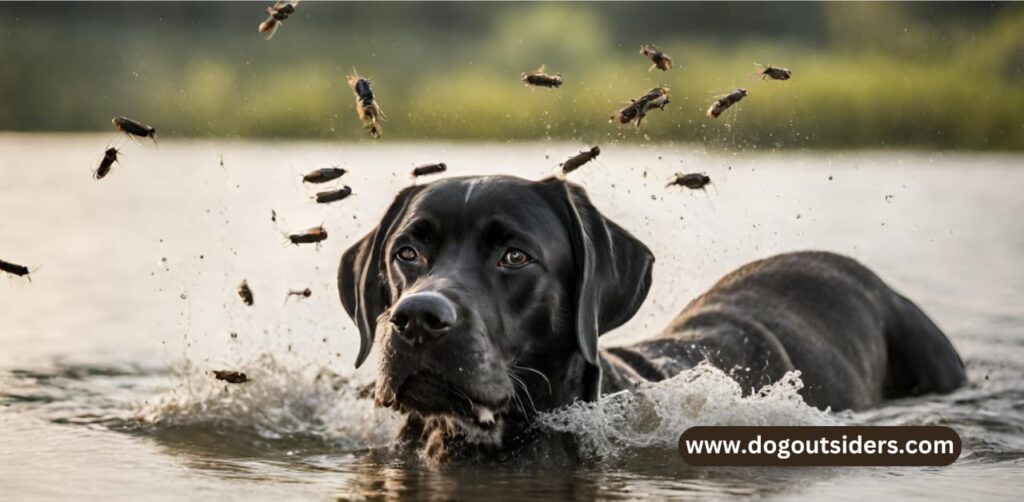
Importance of Baths
Regular baths are crucial for dogs to alleviate inflammation caused by insect bites and maintain overall skin hygiene. Bathing not only removes dirt and debris but also helps in soothing irritated skin. It is essential to use baking soda during baths as it can help in relieving itching and discomfort on the dog’s skin.
Bathing also plays a significant role in managing the dog’s coat. Keeping the coat clean through regular baths can prevent matting and tangling, reducing the chances of attracting flies. Using a mild shampoo suitable for dogs ensures that their skin remains healthy and free from irritations.
Grooming Techniques
Proper grooming is essential in preventing skin infections and attracting fewer flies to your dog. Regular brushing helps in removing loose fur, dirt, and debris that could potentially harbor pests like flies. Moreover, grooming allows you to inspect your dog’s skin for any signs of irritation or bites.
When grooming your dog, pay attention to areas where bodily secretions accumulate, such as under the armpits or between paw pads. These areas are prone to attracting flies due to moisture and odor. Using a gentle cleanser with mineral oil can help in cleaning these areas effectively without stripping the skin of its natural oils.
Personal Experience
I have found that incorporating regular baths into my dog’s grooming routine has significantly reduced the instances of fly bites and skin irritations. By using a gentle shampoo with natural ingredients like oatmeal or aloe vera, I noticed that my dog’s skin remained healthy and free from itching. Maintaining a clean bedding area for my dog helped in minimizing the presence of flies around him.
Another helpful tip I learned is to dress my dog in lightweight clothing during outdoor activities to provide an extra layer of protection against insect bites. This simple measure not only kept flies away but also prevented direct contact between pests and my dog’s skin.
Keeping Your Yard Clean
Prompt Waste Removal
Promptly cleaning up dog poop is crucial to reduce the fly population in your yard. Flies are attracted to feces as a breeding ground, so removing it quickly is essential. Use a pooper scooper or disposable bags to pick up waste immediately after your dog relieves itself.
Leaving dog poop in your yard for extended periods creates an ideal environment for flies to lay eggs and multiply. By removing it promptly, you disrupt this cycle and minimize the attraction of flies to your outdoor space. Make it a habit to clean up after your pet every time they go.
Proper Trash Disposal
Properly disposing of trash is another key factor in preventing flies from swarming around your yard. Ensure that all garbage bins have secure lids to keep flies out and prevent them from being drawn to the smell of rotting food. Regularly empty and clean these bins to eliminate any lingering odors that could attract flies.
Flies are not only attracted to dog waste but also to other organic materials like food scraps and decaying plants. By maintaining a clean environment free of any potential food sources, you can significantly reduce the presence of flies in your yard. Consider composting organic waste in a sealed container away from the house.
Eliminating Standing Water
Standing water can be a breeding ground for flies, so it’s important to address any areas in your yard where water may collect. Empty containers, birdbaths, or any other objects holding water regularly to prevent flies from laying eggs. Ensure that gutters are clear and draining properly to avoid pooling water around your house.
Flies are attracted to moist environments, making standing water an invitation for them to breed near your home. By eliminating these potential breeding grounds, you can effectively reduce the fly population in your yard. Installing drainage systems or adjusting landscaping features can help prevent water buildup.
Choosing Dog-Safe Repellents

Herbal Products
When selecting products to keep flies off dogs outside, be cautious with herbal options. Some ingredients can be toxic to pets, so it’s crucial to read labels carefully. Look for natural ingredients like neem oil, which is safe and effective for repelling insects.
Neem Oil Benefits
Neem oil is a popular choice for dog-safe insect repellents due to its natural properties. It acts as a powerful deterrent against flies and other pests while being gentle on your pet’s skin. Consider incorporating neem oil into your outdoor dog care routine for added protection.
Importance of Safety
Choosing dog-safe repellents is essential for protecting your furry friend from harmful chemicals. Dogs can easily ingest or absorb substances through their skin, making it vital to opt for non-toxic solutions. Prioritize the well-being of your pet by selecting repellents specifically formulated for dogs.
In my experience, I found that using neem oil not only kept flies away from my dog but also helped soothe his skin irritations naturally. Remember to consult with your vet before trying any new products on your pet to ensure they are safe and suitable.
Setting Up Effective Fly Traps
Types of Traps
There are various types of fly traps available in the market, including sticky traps and electric traps. Sticky traps use a glue-like substance to catch flies, while electric traps attract flies with light and then zap them. Electric traps are effective for trapping flies but may not be suitable for outdoor use due to the need for electricity. On the other hand, sticky traps can be easily placed outdoors and are convenient for trapping flies in open spaces.
Proper Placement
To maximize the efficiency of fly traps, it is crucial to place them strategically in areas where flies are most active. Key placement spots include near garbage bins, pet waste areas, and outdoor dining spaces.
Placing fly traps near your dog’s favorite resting spots can also help in reducing fly populations around them. Ensure that the traps are positioned away from where your dog can reach them to prevent any accidental contact.
Benefits of Using Fly Traps
Using fly traps as an additional measure to keep flies away from your dog offers several benefits. They help in controlling fly infestation, reducing the chances of your dog getting irritated or infected by fly bites.
Moreover, fly traps are environmentally friendly alternatives to chemical insecticides, making them safe for both your pets and the environment. By incorporating fly traps into your outdoor space, you create a more comfortable environment for your furry friend.
In my experience, placing multiple sticky traps around my dog’s play area significantly reduced the number of flies bothering him during outdoor playtime. It’s essential to regularly check and replace these traps to ensure their effectiveness in controlling fly populations.
When to Seek Vet Assistance
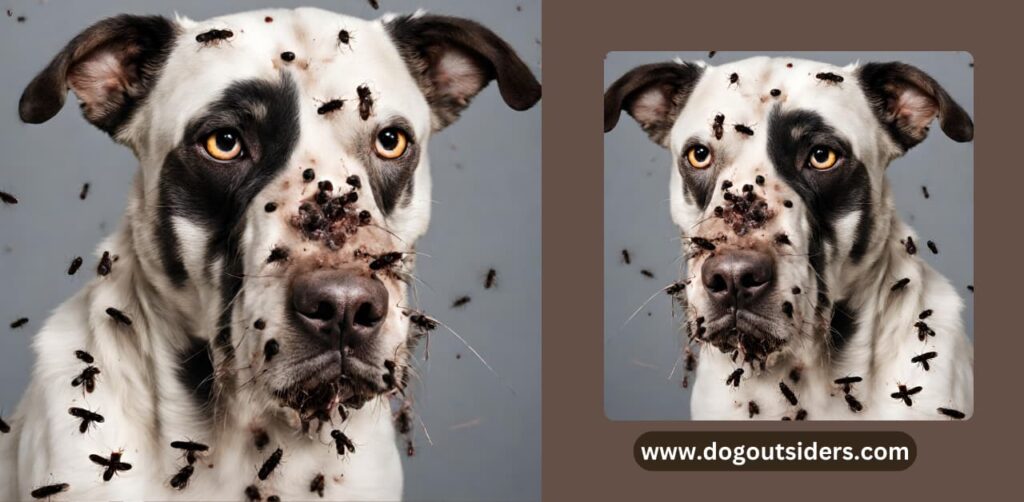
Signs of Severe Fly Bites or Infections
If your dog experiences persistent scratching, redness, or swelling due to fly bites, it might indicate a severe issue. Seek veterinary help if you notice open sores or signs of infection from the bites.
When dealing with fly bites that lead to painful lesions, consult a veterinarian promptly. These wounds can become infected and require professional care for proper treatment.
Importance of Professional Help
In cases where home remedies fail, it is crucial to involve a vet. Veterinarians can provide specialized treatments to alleviate your dog’s discomfort and prevent further complications.
If your dog’s condition worsens despite your efforts, do not hesitate to consult a vet. They can offer expert advice on managing fly infestations and ensuring your pet’s well-being.
Risks of Untreated Fly Bites
Leaving fly bites untreated can result in secondary infections, leading to more serious health issues for your dog. Seeking veterinary assistance promptly is essential to prevent such risks.
Ignoring fly bites may cause pain and discomfort for your furry friend. By involving a veterinarian, you can address these issues effectively and ensure your dog’s recovery.
Conclusion:
After understanding why flies are drawn to dogs and the harm they can cause, it’s clear that prevention is key. By following grooming tips, keeping your yard clean, using dog-safe repellents, and setting up effective fly traps, you can protect your furry friend from pesky fly bites. Remember, a proactive approach is always better than dealing with the consequences later. If you notice persistent issues or concerning symptoms despite your efforts, don’t hesitate to seek assistance from a vet promptly. Your dog’s well-being is worth the extra care and attention.
FAQ’s:
Flies can cause irritation, infections, and even transmit diseases to dogs through bites. They are attracted to moisture, wounds, feces, and food residue on a dog’s body.
Regular grooming such as brushing your dog’s coat, cleaning their ears, and trimming hair around the eyes can help prevent flies from being attracted to your dog.
Remove pet waste promptly, keep garbage bins covered, and eliminate standing water in your yard. Flies are attracted to decaying organic matter, so maintaining cleanliness is crucial.
You can use natural repellents like diluted apple cider vinegar or essential oils like citronella or lavender. Always ensure that any repellent you use is safe for dogs and consult with a vet if unsure.
If you notice signs of infection such as redness, swelling, pus, or if your dog is excessively scratching or in discomfort due to fly bites, it’s important to seek veterinary care promptly.

